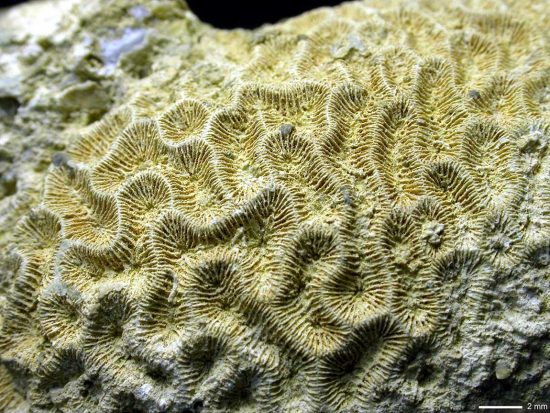




How corals met algae: Tracing how their symbiotic relationship started
The symbiotic relationship between algae and modern corals began more
than 210 million years ago during the late Triassic period, during a
time of massive coral-reef expansion worldwide, according to a new
study by a team of international scientists.
Published in the Science Advances journal, the study found strong
evidence of this coral-algae relationship in fossilised coral skeletons
dating back to the late Triassic period.
“It is important to know how
far back in time symbiosis evolved because it gives insight into how
important symbiosis is to the health of coral reefs. It appears that
the origin of symbiosis corresponds to the rise of coral reefs in
general,” said Daniel Sigman, Princeton's Dusenbury Professor of
Geological and Geophysical Sciences and a member of the Princeton
Environmental Institute.
In addition, the study also found that the corals inhabited
nutrient-poor marine environments (similar to today’s subtropical
waters) where algae-coral symbiosis played a major role in driving the
development of reefs.
Describing the onset of symbiosis with algae as highly profitable for
corals, lead author Jaroslaw Stolarski, a professor of biogeology at
the Institute of Paleobiology at the Polish Academy of Sciences
explained that “it allowed them to survive in very nutrient-poor
waters, and at the same time grow and expand.”
Algae known as dinoflagellates live inside the corals’ tissues. They
use photosynthesis to produce nutrients, many of which they pass on to
the corals’ cells. In turn, the corals emit ammonium as a waste
product, which the algae consume.
This relationship keeps the nutrients recycling within the coral and
greatly increases the coral’s food supply. Symbiosis also helps build
reefs — corals that host algae can deposit calcium carbonate (the hard
skeleton that forms the reefs) up to 10 times faster than non-symbiotic
corals.
To find out when symbiosis began, the researchers looked for signs in
the coral fossils that indicate the past presence of algae: fossil
microstructures, levels of different types of carbon and oxygen, and
levels of two forms of nitrogen.
“We found strong evidence that the fossilised coral were symbiotic and
that they lived in a nutrient-poor environment. We were able to link
the environmental conditions from 200 million years ago to the
evolution of corals,” said Xingchen (Tony) Wang, a postdoctoral
research fellow working with Sigman.
George Stanley, a professor of geosciences at the University of
Montana, had earlier explored the question of when symbiosis first
evolved in corals. “This confirms a hypothesis that my colleagues and I
put forth 20 years ago. It is really exciting to see this
confirmation,” said Stanley, who was not involved in the recent study.
Stanley said the work would not have been possible without the coral
fossils, which were remarkably well-preserved. “These corals are such a
wonderful resource because they are as if you picked them up off the
beach yesterday, and this is because they were sealed in deposits for
centuries.”
He added that he fossil record also showed a significant reef expansion
that took place around 205 million years ago, matching a boost in coral
growth due to the development of symbiosis.
 Mares
Mares 26th November 2016
26th November 2016